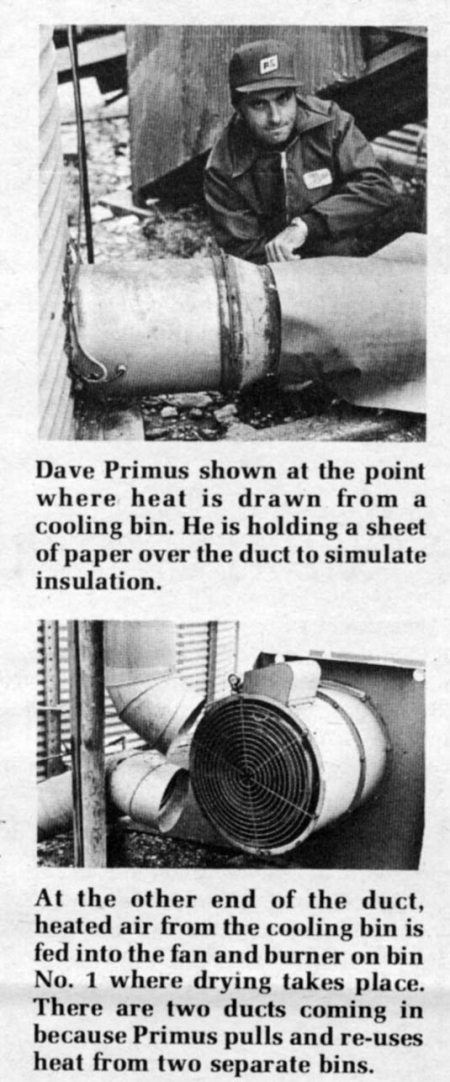
A simple method invented and patented by an Iowa corn farmer can save up to 50% on drying fuel costs, he claims.
The method re-uses heat usually wasted when drying grain in a standard two-bin system where one bin, with propane burner and fan, drys grain and the grain is then moved hot to an adjoining bin to cool.
The system pulls heat off the grain that's cooling in the second bin and ducts it back to the original bin -- to the burner and fan. The burner then does not have to supply as much heat for the next batch of grain being dried.
Rights to manufacture and market the invention have been purchased by Nebraska Engineering Co., Omaha, Neb., whose president William Patterson told FARM SHOW that the system will be available for purchase later this year. While still field testing the product, his company is ready to reply to inquiries from interested farmers who want more information.
Dave Primus, who farms near Mt. Auburn in eastern Iowa, invented the fuel-saver. Primus farms 800 acres, of which about 350 are corn each year, and his grain yields average 125 bu. most years. So he has a lot of corn to dry -- about 44,000 bu. a year.
He got the idea for his invention three years ago and has been using it since. His patent, number 4142302, was granted in March, 1979, and is a method patent.
With the fuel-saver in use, Primus says he can dry 2,000 bu. in 24 hrs. taking out 10 points of moisture -- not bad for an in-bin system! "Corn is dryed in the first bin, transferred hot to a second bin, then a fan pulls air through the dry, hot grain and a duct carries it to the burner and fan on the first bin," he told FARM SHOW.
In Primus' set-up, the first bin is 4,000-bu. capacity, but he says any size drying bin could be used. A system for sweeping hot grain off the floor and augering it up and out to the second bin is required. Such systems are readily available from several companies.
Primus' fan for pulling air through the hot grain is powered by a 1 hp motor. The sheet metal duct is 12 in. in dia. He says it would help considerably to insulate the duct.
"The system definitely saves fuel," says Primus, "It'll save 25 to 35% on the average, but it has saved as high as 50% and as low as 10%."
Patterson notes that, in his field tests, the system did not save more than 10%, but the tests were done in a year which was unusually good weather-wise for drying.
"You don't save as much when the corn moisture is low," he points out. "Also, outside temperature and humidity have an effect. The humidity of the returning warm air is only 1 to 2 points above outside air.
Patterson says the price of the fuel-saver will run somewhere around that figure, not including the motor and fan. The duct work he markets will not be insulated.
Both Patterson and Primus explain that their system offers a distinct advantage over the several heat-saver systems now available for use on large, portable batch grain dryers.
"They haven't solved the bees' wings problem," explains Primus. "The wetter the corn, the more bees' wings there are, and they can collect in the burner and fan or under the bin floor and catch fire. They come off the tip of the corn kernel where it joins the cob, and can be a real fire hazard. Our system leaves the bees' wings with the corn in the second bin."
Primus concedes that a farmer could build his own heat-saver, but probably would be just as well off buying one because he wouldn't save any money, and would have to do his own engineering.
